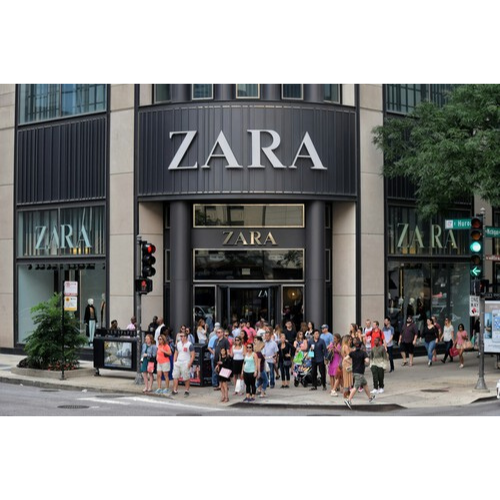Inditex Faces Global Headwinds
Inditex—the Spanish multinational behind fashion giants like Zara, Massimo Dutti, and Bershka—released its semiannual earnings report. While the company remains profitable, the numbers reveal a concerning slowdown in growth, raising questions about the future of global retail amid economic uncertainty, shifting consumer behavior, and rising geopolitical tensions.
Slower Growth Despite Profitability
Inditex reported a modest 1.9% increase in net profit compared to the same period last year, falling short of analysts’ expectations. Revenue growth also decelerated, particularly in key markets such as Europe and Asia. While the company maintained strong margins and operational efficiency, the slowdown in top-line growth is a red flag for investors and industry watchers.
Key Financial Highlights
Net profit: €2.1 billion (up 1.9%)
Revenue: €16.3 billion (up 4.2%)
Gross margin: 58.9% (stable year-over-year)
Online sales: Slight decline in growth rate compared to previous quarters
Global Economic Pressures
Inditex’s performance must be viewed in the context of broader macroeconomic challenges. The global economy is grappling with sluggish consumer demand, inflationary pressures, and trade disruptions. In particular, new tariffs imposed by several Asian governments on European textile imports have impacted Inditex’s supply chain and pricing strategy.
Additionally, the strengthening of the U.S. dollar has made European exports less competitive in international markets, further squeezing margins.
Regional Breakdown
Europe: Weak consumer sentiment due to inflation and stagnant wages
Asia-Pacific: Trade barriers and slowing demand in China
Latin America: Currency volatility and political instability affecting retail expansion
North America: Stable performance but limited growth opportunities

Changing Consumer Behavior
Beyond macroeconomics, Inditex is facing a shift in consumer preferences. The rise of sustainable fashion, second-hand marketplaces, and digital-native brands is challenging traditional fast fashion models. Younger consumers are increasingly prioritizing ethical sourcing, transparency, and personalization—areas where Inditex has made progress but still lags behind some competitors.
Moreover, the post-pandemic boom in online shopping has plateaued, and foot traffic in physical stores remains inconsistent. Inditex’s hybrid model—combining brick-and-mortar with e-commerce—needs recalibration to meet evolving expectations.
Is Inditex Losing Its Edge?
Inditex has long been praised for its agile supply chain, rapid inventory turnover, and trend-responsive design. However, the current slowdown suggests that these strengths may no longer be sufficient in a retail environment that demands innovation, sustainability, and digital excellence.
Strategic Weaknesses:
- Limited AI integration in inventory and customer experience
- Slow adaptation to circular fashion models
- Overreliance on European markets, which are currently underperforming
While Inditex has launched sustainability initiatives—such as its “Join Life” collection and carbon-neutral goals—these efforts have yet to translate into significant brand differentiation or consumer loyalty.
What Lies Ahead for Inditex?
To regain momentum, Inditex will need to rethink its global strategy and invest in areas that align with future retail trends. Here are several projections and strategic recommendations:
- Accelerate Digital Transformation
Inditex must enhance its e-commerce platforms with AI-powered personalization, virtual fitting rooms, and real-time inventory tracking. Investing in data analytics and customer insights will be key to driving engagement and conversion. - Embrace Circular Fashion
The future of fashion is circular. Inditex should scale up its clothing recycling programs, resale platforms, and repair services to meet the growing demand for sustainable consumption. - Collaborate with Tech Startups
Partnerships with fashion-tech startups can inject innovation into Inditex’s operations. From smart textiles to augmented reality shopping experiences, collaboration is a fast track to modernization.
